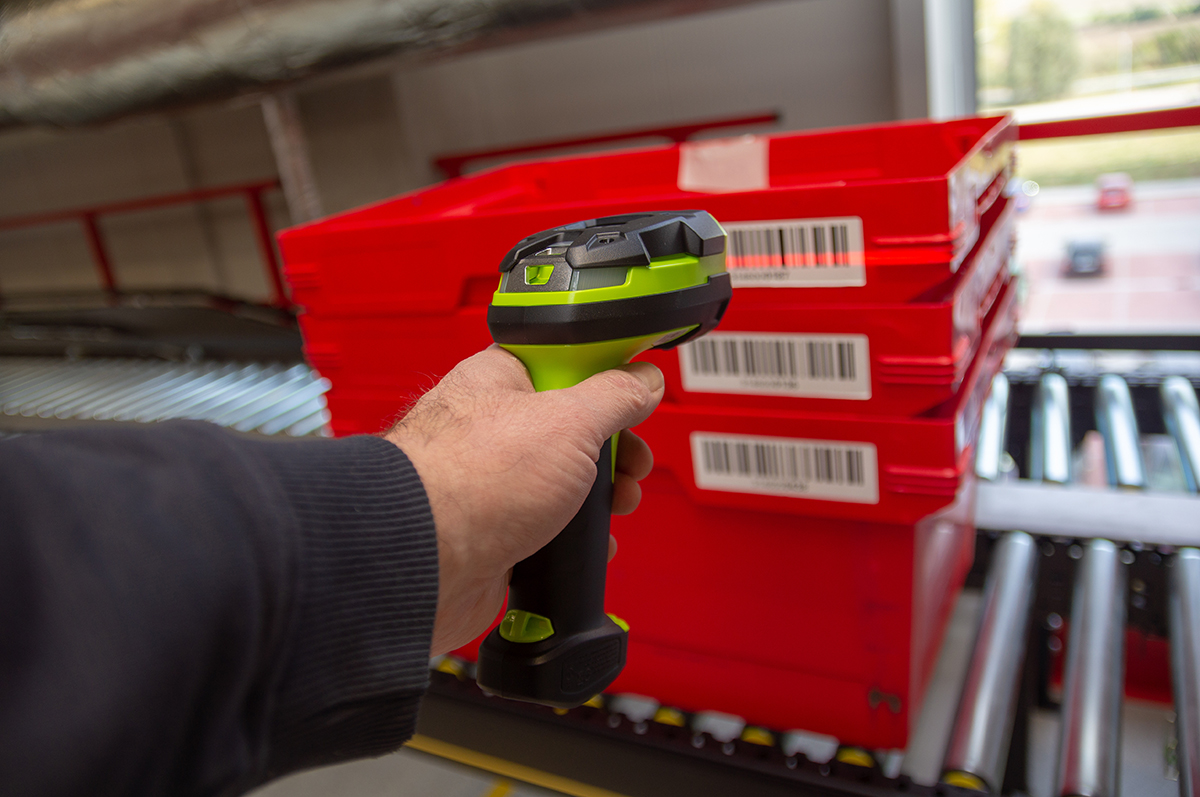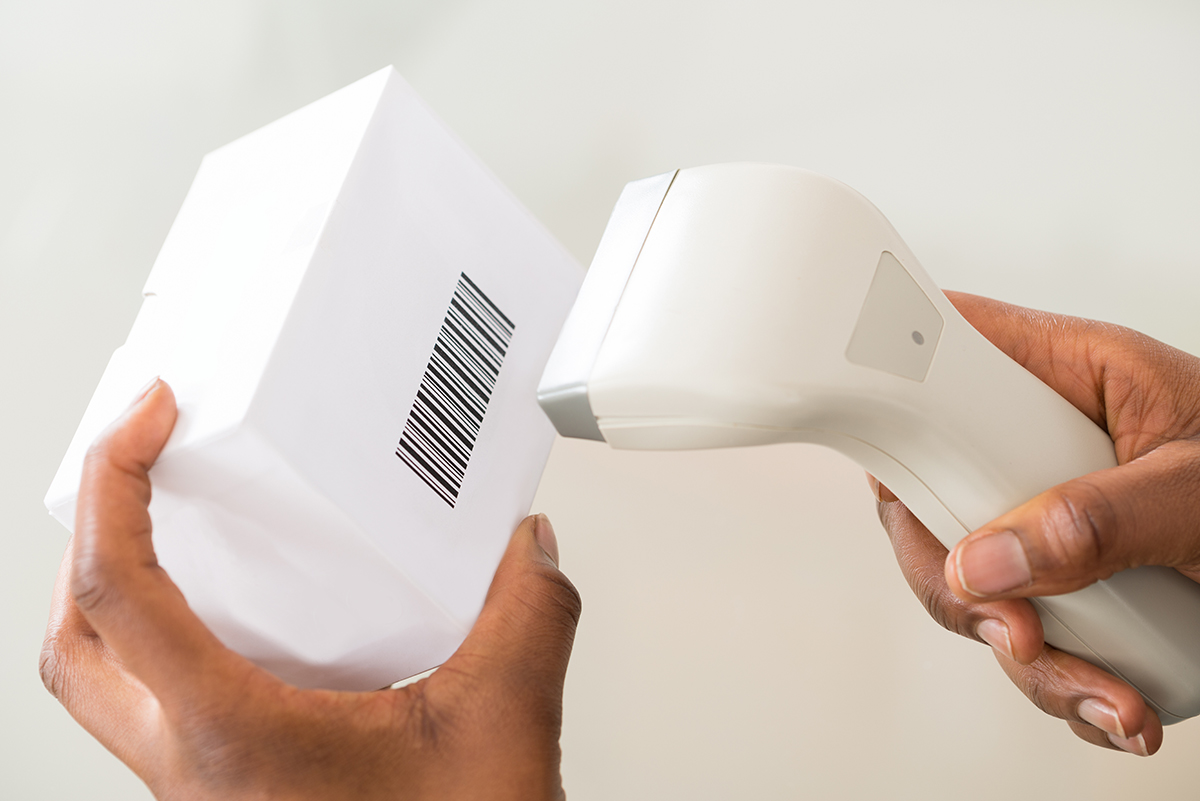It might happen to wonder, looking at the barcode affixed to the products offered for sale in a commercial establishment, who is responsible for deciding and positioning the barcode, as well as what its function is.
In order to answer these questions it is necessary to explain what the GS1 system is. The GS1 system is used for the coding of consumer products and allows companies to uniquely identify services, logistic and commercial units, functions and places related to these products.
This uniqueness is achieved by using identification numbers, which have the form of a barcode. Using the barcode, the optical readers placed at the points of sale can register the outgoing products, deducting them from the warehouse accounting, and provide the customer with an accurate account of their expenditure.
The GS1 system has by now a worldwide development, being almost one million companies that have joined in the world, thus providing a testimony of the universality of the system itself.

GS1 SYSTEM: LET'S SEE MORE IN DETAIL
When a company joins the GS1 system, it becomes an associate and receives its own GS1 Global Company Prefix, i.e. its corporate GS1 prefix, which will become its unique international identification code. It will therefore be a sort of tax code or VAT number, however accepted and recognized all over the world. Furthermore, in joining the GS1 system, the company is entrusted with a thousand GS1 (EAN) numbers - which will contain the company GS1 prefix previously provided - which can be attributed to its products, thus forming a unique identification code for them.
This unique identification code attributed to the individual products, and having an international value, is the GTIN code. So let's see what it is, how to get it, what costs it presents and what advantages it entails.
GTIN CODE: WHAT IT IS
The Global Trade Item Number, known by the acronym GTIN, is the term that indicates the GS1 code that has been assigned to the packaging units, to the consumer units, to the sales units with respect to which it is possible to find useful information for commercial purposes.
The GTIN code is therefore affixed to the single product (consumer unit), for example a pack of pasta, to the carton containing multiple products (packaging unit) and to the pallet containing multiple cartons inside which there are the individual products (sales unit). .
HOW TO OBTAIN THE GS1 CODE (EAN).
How to get the GS1 barcode for my products?
As previously mentioned, the first step to obtain the GTIN code - useful for identifying the consumer unit - is to obtain the company GS1 prefix. This prefix will have a global value, will identify the owner of the brand, will not indicate the provenance or origin of the product and will be assigned with Endicod-Ecr, today GS1 Italy, to the associated company.
Indicod-Ecr remains the owner of the company GS1 prefix, the same company therefore undertakes to use this prefix following the rules imposed by the GS1 system.
To obtain the company GS1 prefix, it is necessary to register with the GS1 Member Organization, which in Italy is Endicod-Ecr, directly on the corresponding website. Once the online form has been completed, you will receive confirmation of your registration by Ecr by e-mail, with all further information to complete the request.
Once the procedure is completed, you will receive the communication of attribution of the company GS1 prefix, with which to identify your products.

THE GS1 CODE ASSIGNMENT PROCEDURE
How do you assign the GS1 (EAN) barcode to your products.
The process of identifying and assigning the consumer unit - that is, the individual products marketed in the various points of sale - is simple. Let's take an example that can better clarify the mechanism: the company Tizio SpA registers online and receives, following completion of the registration, a company GS1 prefix from Endicod-Ecr, ie 823045789. This prefix n. 823045789 identifies the company Tizio SpA universally and uniquely, as the owner of the brand.
The Tizio SpA company will then decide the additional three numbers (eg 421), which will have the value of the product code, and the last number (eg 6), which will be the check digit. These numbers decided by the company will vary by products, while the company GS1 prefix will be the only one to remain unchanged.
The company will have the possibility to assign up to one thousand product codes (from 000 to 999), if it needs more codes, it will always be able to send the request to Endicod-Ecr and it will receive a new company GS1 prefix.
Using our example, therefore, the company Tizio SpA will use the code 823045789-421-6 for the 100 g box of peas, where: 823045789 is the company GS1 prefix; 421 is the product code decided by the company; and 6 is the check digit, always decided by the company.
WHAT HAPPENS IF PRODUCT PARAMETERS ARE CHANGED
Should some of the product parameters change - such as brand, size, variety, type of package - a new GTIN code will have to be assigned. However, it is not always certain that the modification of certain parameters must necessarily involve the assignment of a new GTIN code.
For example, the assignment of a new code is not required in the following cases: adding an additional language, in addition to the one already present, on the package; small variation of the graphics; minor changes to the product packaging material; small variations in the quantity of the product; price variation, provided that this is not indicated on the product packaging; inserting a discount code on the coupon.
Instead, a new code is assigned if there is: replacement of the language originally present on the package; change of brand name; an increase in the size of the product package by more than 20%; changes in net weight; insertion of the discount code applied on the product packaging; product with extra quantities, so-called bonus pack; insertion of multiple products within the same package.
TYPES OF BAR CODES
The GS1 system provides various types of barcodes: EAN, ITF, UPC, JAN and ISBN. The EAN code is used for Europe and provides (usually, although there are exceptions) a 13-digit code, clearly the best known for Italy and it is also the code we have talked about so far. The EAN code is the only one that can be read by the optical scanners present in the various points of sale.
The ITF code consists of 14 digits and the code used for multipacks; the UPC code, on the other hand, consists of 12 digits and is used in North America; the JAN code consists of 8 or 13 digits and is used in Japan; finally, the ISBN code is the 13-digit code used for books. Code bars are specially created by computer systems.
There are various software, both paid and free, which allow both to generate them and to assign them to individual products. Otherwise, you can rely on a typographer. The quality of the EAN code printing is very important for a product to be correctly identified.
TALKING ABOUT COSTS
As foreseen by the Statute, the company that wants to use the company GS1 prefix will have to pay an annual contribution and a fixed registration fee, established by the General Assembly.
Being a non-profit organization, the amount of the aforementioned two shares will be established with reference to objective parameters, such as, by way of example, the company's turnover.
Taking an example that can better clarify: if the turnover of your company is up to Euro 500,000.00, the registration fee will be equal to Euro 300.00 and the annual contribution will be equal to Euro 95.00.

WHAT BENEFITS THE GS1 CODE (EAN) PROVIDES
The idea for barcodes was created by engineering students NJ Woodland and B. Silver , who, by virtue of the president of a food company president's need to automate checkout operations, created the concept barcode.
The bar code, therefore, first born to serve food shops, was soon extended to every other sector; this is because the resulting benefits were immediately visible and essentially related to better data management, cost reduction and accessibility.
To date, especially by virtue of the improvements made to the barcode since the advent of the technological revolution, the advantages deriving from the use of the barcode - in particular the GS1 (EAN) code - have significantly increased.
Among these advantages is the improved accuracy of the data. The insertion of data, in fact, allows companies to create precise reports and make forecasts on future actions to be carried out and on needs. Furthermore, barcodes reduce the risk of human error in collecting such data by almost 90%.
Another benefit is improved efficiency: thanks to barcodes it will be possible to work faster without, however, compromising accuracy.
In addition, the use of barcodes in very fast-paced industrial environments allows for predictable and consistent operations that improve product quality by combining the various data management functions.
The barcodes then help companies to have an integral view of their resources; among the further advantages, in fact, there is an improvement in the management of assets and inventory. In fact, companies, as a rule, apply a barcode for their goods, so as to record their conditions, characteristics and number. In addition, by scanning the barcode affixed to the product packaging or packaging, the company can update its inventory in real time.
Finally, it should be noted that the improvement that companies experience following the use of barcodes also includes the improvement of the service offered to customers, the reduction of supplier response times and labor costs, the reduction of the costs of equipment and numerous economic savings resulting from all of the above.
See also:
- The SKU Code is what it is and why to use it in the company
Author: Loris Modena

SENIOR DEVELOPER
For Ind Loris Modena , owner of Arte e Informatica , he began working in the IT sector in 1989 as a system engineer in charge of the maintenance and installation of IT systems. He started programming for the web in 1997 dealing with CGI programming in PERL and then moving on to programming in PHP and JavaScript. In this period he approaches the Open source world and the management of Linux servers.
